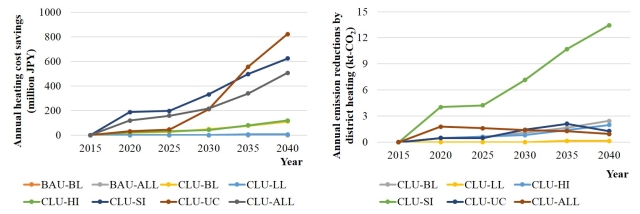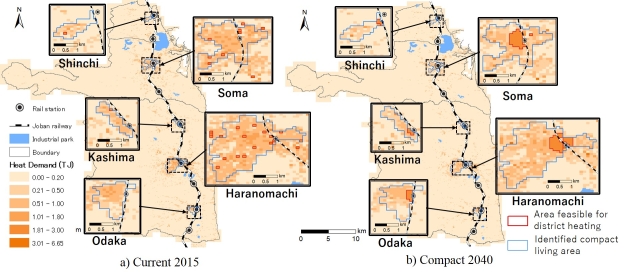Information of Paper
Authors:Yi Dou(1, 2), Keijiro Okuoka(2), Minoru Fujii(1), Hiroki Tanikawa(2), Tsuyoshi Fujita(1), Takuya Togawa(3), Liang Dong(1, 4)
1 Center for Social and Environmental Systems Research, National Institute for Environmental Studies (NIES), 16-2 Onogawa, Tsukuba, Ibaraki 305-8506, Japan
2 Graduate School of Environmental Studies, Nagoya University, Furo-cho, Chikusa-ku, Nagoya 464-8601, Japan
3 Fukushima Branch, National Institute for Environmental Studies (NIES), 10-2 Fukasaku, Miharu-machi, Tamura-gun, Fukushima 963-7707, Japan
4 CML, Leiden University, Leiden, the Netherlands
Year:2018
Journal:Frontiers in Energy
Link to the paper
Keywords
building stock, compact city, district heating, energy use, Fukushima
Abstract
District heating systems using cogeneration technology and renewable resources are considered as an effective approach to resources conservation and reduction of greenhouse gas (GHG) emissions. However, wide-spread ageing and depopulation problems, as well as the popularization of energy-saving technologies in buildings, are estimated to greatly decrease energy consumption, leading to inefficiency in district heating and barriers to technology proliferation. From a long-term perspective, land use changes, especially the progression of compact city plans, have the potential to offset the decrement in energy consumption that maintains the efficiency of district heating systems. An integrated model is developed in this paper based on building cohort analysis to evaluate the economic feasibility and environmental impact of introducing district heating systems to a long-term compact city plan. As applied to a case in the Soma Region of Fukushima, Japan, potential migration from the suburbs to the central station districts is simulated, where district heating based on gas-fired cogeneration is expected to be introduced. The results indicate that guided migration to produce concentrated centers of population can substantially increase the heat demand density, which supports a wider application of district heating systems and better low-carbon performance. These results are further discussed in relation to technology innovation and related policies. It is concluded that policies related to urban land use planning and energy management should be integrated and quantitatively evaluated over the long term with the aim of supporting urban low-carbon sustainable development.






